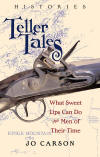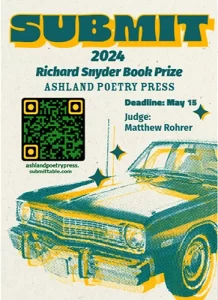Teller Tales
In the tradition of Southern oral storytelling style, Jo Carson writes her stories for telling aloud. Teller Tales: Histories, her newest book, carries on this almost lost art of speaking and of handing down the history created by previous generations. According to Carson, both stories, “What Sweet Lips Can Do,” and “Men of Their Time,” were originally written to be performed. Unlike many other traditional texts that recount American historical events, Teller Tales is a narration, a performance of two stories wrapped around the American Revolutionary War. Neither monotonous nor mundane, Teller Tales reads as if the narrators are standing on a stage, talking, reminiscing, throwing laughable tidbits, and handing down what they know about the events that helped shape the America we know today.
In the tradition of Southern oral storytelling style, Jo Carson writes her stories for telling aloud. Teller Tales: Histories, her newest book, carries on this almost lost art of speaking and of handing down the history created by previous generations. According to Carson, both stories, “What Sweet Lips Can Do,” and “Men of Their Time,” were originally written to be performed. Unlike many other traditional texts that recount American historical events, Teller Tales is a narration, a performance of two stories wrapped around the American Revolutionary War. Neither monotonous nor mundane, Teller Tales reads as if the narrators are standing on a stage, talking, reminiscing, throwing laughable tidbits, and handing down what they know about the events that helped shape the America we know today.
Jam-packed with one-liners reminiscent of the comedic straight man and his sidekick, two stereotypical, Southern comrades share what they know of a people, specifically the Overmountain men and the turn of events that was pivotal in shaping the outcome of the American Revolution. More bits than pieces of some lesser known facts and players are thrown in amongst the details.
The most mundane details are found in “What Sweet Lips Can Do,” during a “long and complicated” narration about the long rifle which lends its name to the story. One Mountain man, Robert Young, named his gun Sweet Lips for his wife, Mary, explaining, “I like to think she was honored by that.
The performance begins, “These are the times that try men’s souls,” because “patriots had had themselves a tea party in Boston in 1773,” and “King George of England [who] didn’t want to lose any empire… sent those sons across the big water to teach those New World miscreants a lesson.” Carson’s most engaging strength is her use of the casual, comically irreverent sidebars between the two speakers. This comical irreverence is heightened by the shortened quips of each speaker. In a style indicative of a theatre production, the banter between the narrators maintains a steady, almost poetic stream of consciousness. And just when the instruction becomes cumbersome, the banter between performers becomes laughable as one throws in a ringer:
“The British army pitched their tents.”
“Each of Ferguson’s redheaded mistresses had her own separate tent,”
“and in the manner of the British army, he set his cooks about dinner.”
“He’s sort of an early RV?style camper, isn’t he?”
The unexpected catches you off guard, a technique which is woven throughout both stories. Carson allows these two knowledgeable historians – comfortable comrades – to finish the phrase, the sentence, even the thought for the other without forethought or embarrassment. In so doing, we are exposed to yet another version, another truth, another twist on history. Like any good poet, Carson knows the power of white space on a page. Teller Tales, a mere 138 pages in length, is laden with history, yet the pages at times seem almost sparse, making for a quick read. This sparseness, however, does not mean the stories are empty of content.
“What Sweet Lips Can Do,” intertwines the history of the men, the women, even the muskets and the making of gun powder into the mix. “Men of Their Times” threads Cherokee war chief Dragging Canoe into its story, telling how he and his people affected the outcome of the Revolutionary War. Carson doles out other little known facts, like how the matrilineal society of the Cherokee contrasted and contributed to American history.
Coupled with white space, Carson’s inclusion of theatrical intermissions between scenes provides an additional breather for the audience and reader. These visual line stops allow the reader to not only take in the history that has been shared, but allow for ease in referring back to what has been read.
Whether you are an American history buff, or whether you enjoy narrative Southern storytelling reminiscent of Mark Twain, Teller Tales will not only teach, but entertain.





